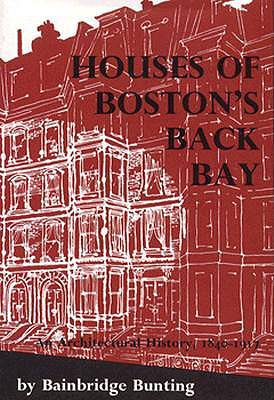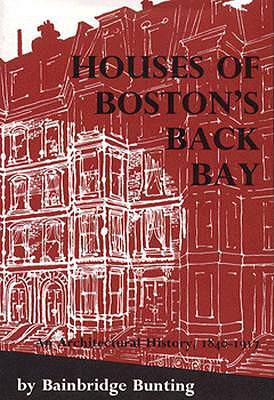
- Afhalen na 1 uur in een winkel met voorraad
- Gratis thuislevering in België vanaf € 30
- Ruim aanbod met 7 miljoen producten
- Afhalen na 1 uur in een winkel met voorraad
- Gratis thuislevering in België vanaf € 30
- Ruim aanbod met 7 miljoen producten
Zoeken
€ 169,95
+ 339 punten
Omschrijving
This superbly illustrated book records the development of Boston's Back Bay during the period of its greatest growth. Bainbridge Bunting focuses his study on one particularly significant architectural form--the town house. He chronicles, both pictorially and verbally, the first appearance, evolution, and eventual discard, during the era, of every local architectural style, all of which later gained national acceptance. He shows how architectural styles were affected by such developments as the electric light, changing preferences in materials, machine production of such interior parts as woodwork and mantels, new fire laws and building restrictions, and rising labor costs. He also provides an extensive account of the pivotal role played by members of the Boston Society of Architects in the growth of the profession throughout the country during this formative period. These Back Bay homes, Bunting points out, reflect to a striking degree the social and cultural attitudes of the community and, in the process of reconstructing the life that was led in them, he offers an absorbing and perceptive commentary on Boston society and its mores.
Specificaties
Betrokkenen
- Auteur(s):
- Uitgeverij:
Inhoud
- Aantal bladzijden:
- 494
- Taal:
- Engels
- Reeks:
Eigenschappen
- Productcode (EAN):
- 9780674409002
- Verschijningsdatum:
- 1/01/1967
- Uitvoering:
- Hardcover
- Formaat:
- Genaaid
- Afmetingen:
- 168 mm x 244 mm
- Gewicht:
- 952 g

Alleen bij Standaard Boekhandel
+ 339 punten op je klantenkaart van Standaard Boekhandel
Beoordelingen
We publiceren alleen reviews die voldoen aan de voorwaarden voor reviews. Bekijk onze voorwaarden voor reviews.











